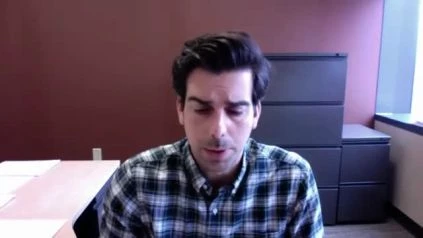Maximilian Merz, MD from Roswell Park Comprehensive Cancer Center speaks about 722 Spatiotemporal Assessment of Immunogenomic Heterogeneity in Multiple Myeloma.
Introducing:
In multiple myeloma, care and immune-mediated procedures are associated with clonal evolution (MM). In this research, whole-exome sequencing (WES) and single-cell RNA sequencing (scRNA-seq) were performed on plasma cells (PC) from iliac crest (BM) bone marrow aspirates and corresponding osteolytic lesions (OL) to investigate spatial heterogeneity in newly diagnosed (NDMM) and relapsed/refractory MMM patients (RRMM). To examine the immunogenomic landscape surrounding malignant PCs, next-generation flow (NGF) and T-cell receptor sequencing (TCRseq) were performed.
Methodology:
In a prospective trial, in addition to the standard BM sampling, 18 patients (NDMM: n=10; RRMM: n=8) consented to an OL imaging-guided biopsy. Thirty-seven distinct sites were biopsied upon inclusion. During treatment, follow-up samples were collected from 5 patients in remission. PCs were subjected to WES and scRNA-seq after CD138+ selection (Chromium, 10x genomics). TCRseq on the CD138- fraction was performed using multiplex PCR (ImmunoSEQ, Adaptive Biotechnologies). Cell Ranger (v3.1.0) and the Seurat R toolkit (v3.1) have been used for scRNA-seq data analyses. ImmunoSEQ ANALYZER (v3.0) and Immunarch R toolkit data were analyzed for TCRseq (v0.6.6.). NGF was performed to study T-, B-, NK- and dendritic cell subsets (DC).
Outcomes:
In contrast to random BM, median PC infiltration was greater in OL (50.0 percent vs 12.5 percent, p=0.041). WES revealed more mutations in RRMM compared to NDMM (median; range: 189;120-523 vs 71;23-136, p<0.001). Based on WES mutational profiles, 4 out of 18 patients demonstrated branching evolution in OL-isolated PCs. Three of the 4 patients had RRMM and a previous history of solitary plasmacytoma was found in one patient with NDMM. In 3 of the 4 patients with branching evolution, PCs were obtained from OL with an adjacent extramedullary disease (EMD). Among site-specific mutations, two distinct BRAF mutations were found in one patient: V600E in the BM and G469R in the OL. The OL was found to have an extra NRAS mutation (G12D). Resistance to BRAF inhibitors is caused by BRAF G469R and NRAS G12D, but this patient was naive to the BRAF inhibitors. Chromosomal aberrations, including site-specific chromothripsis of chromosome 1 in a patient with RRMM, often reflected clonal evolution. ScRNA-seq of more than 150,000 PCs from 10 patients and 21 separate locations reported numerous clones, including in patients with no spatially divergent clones as observed by WES. Differential expression of BM-associated genes (CXCR4), malignant transformation (Jun/Fos, CD27, CD79a), apoptosis (BCL-2), bone disease (DKK1) and LAMP-5 is detected by distinct PC clones. ScRNA-seq demonstrated the emergence of a PC clone characterized by overexpression of Interferon-induced genes (ISG15, IFI27, IFI44L) in a patient with NDMM in remission after induction therapy relative to the initially predominant PC clones. Next, we examined immune cell spatiotemporal variations. Median TCR richness estimation using the abundance-based estimator (Chao1) showed significantly lower values relative to NDMM (389341; 50318-525082, p<0.001) and nine healthy individuals (460278; 138326-696419, p<0.001) in patients with RRMM (120444; 57706-212744). As indicated by Simpson’s D, no substantial differences were observed for TCR clonality. Although longitudinal monitoring of TCR clones at primary diagnosis showed no clonal expansion after treatment, induction therapy restored sample richness to levels of healthy individuals in patients with NDMM (p=0.61). A strong concordance of TCR repertoires from OL and random BM with Morisita indices ranging from 0.80 to 0.95 in 90 percent of patients was demonstrated by overlap review. Important site-specific expansion of TCR clones was nevertheless observed. In accordance with TCRseq, more regulatory T-cells (p=0.048) and less myeloid DC (p=0.024), Th9 cells, and CD8 effector memory T-cells compared to NDMM were shown by NGF in the BM of patients with RRMM.
The Conclusion:
The first prospective clinical trial to examine spatiotemporal immunogenomic heterogeneity in multiple myeloma as evaluated by the non-PC compartment’s WES and scRNA-seq of PC and NGF and TCRseq is recorded. In particular, in patients with RRMM and/or EMD, we show spatial evolution and reduced TCR diversity. In contrast to WES, ScRNA-seq adds another layer of complexity and helps to define how PC develops an immune suppressive niche for BM.

